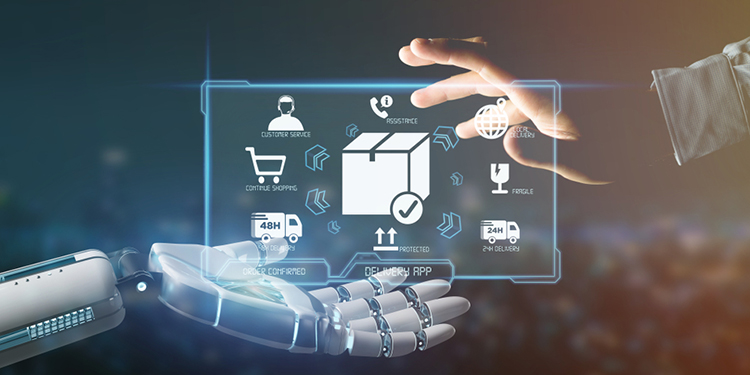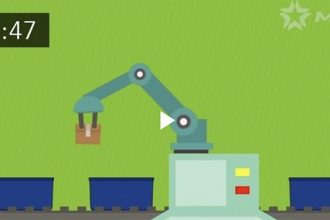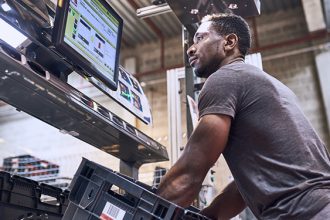
The collaborative robot market will grow from $710 million in 2018 to $12,303 million in 2025 at a compound annual growth rate (CAGR) of 50.1%, according to research from Markets and Markets. And while that may cause some workers concern about being replaced, the reality is that cobots and autonomous mobile robots (AMRs) with payloads up to 11 pounds are increasingly being implemented to support and enhance worker efficiency — not take their jobs.
A recent MHI Solutions article, “Humans + Machines = Exponential Improvements In Supply Chain Worker Performance,” explores how adding robotics and other digital technologies can supercharge the productivity of individual workers.
While robots excel at performing standardized, repetitive processes and actions, they haven’t yet attained the capacity for independent thought, reasoning or problem solving. That makes them ideal for taking on monotonous, repetitive tasks within supply chains, such as transporting loads from point A to point B, folding boxes, applying labels and tape, picking items, unpacking boxes, filling containers, packing cases, palletizing boxes, or packing orders. This frees employees to handle tasks that require adaptive, problem solving skills, such as managing exceptions, picking and packing delicate items, assembling complex orders, and other assignments that require human dexterity and creativity — and increasing overall efficiencies.
Cobots can also open up opportunities for facilities struggling to attract and retain staffers by enabling them to leverage labor pools they may not have previously considered. Among them are part-time and temporary staffers, who can be quickly trained to handle specialized tasks while the robots tackle routine ones, as well as persons with disabilities or physical limitations.
With robots freeing humans from mundane tasks, the risks of ergonomic stresses and strains are also reduced. Workers are less likely to experience repetitive motion injuries or fatigue, further bolstering their productivity. Plus, assigning associates to more challenging tasks makes work more engaging — and a more engaged workforce is a more productive one.
Additionally, the MHI Solutions article offers recommendations to help ensure that the introduction of robotic solutions into an existing workforce succeeds. It notes that associates should be engaged in the adoption and implementation process early to ensure they understand how the system will improve their performance. Workers should be encouraged to take ownership of the new technologies through training and interactions that demonstrate their value.
For more information about how collaborative robots and other technologies will boost productivity throughout supply chains, read the full article here.



